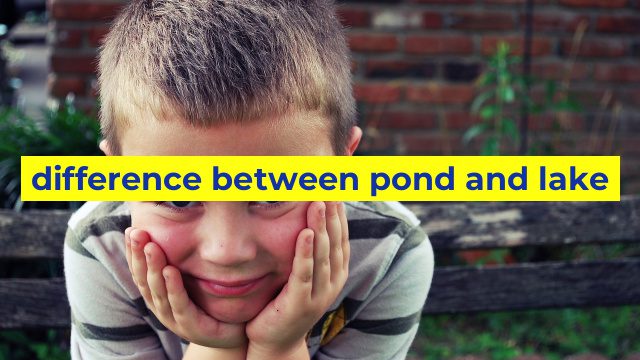The Difference Between a Pond and a Lake: Explained
If you’ve ever been to a park or a nature reserve, you might have come across a small body of water that looked like a large pond. But, what if someone told you that it was actually a lake? The concept of a pond and a lake might seem similar, but there are some key differences that set them apart. In this article, we’ll help you understand these differences and how they impact the ecosystem.
Size Matters
One of the most significant differences between a pond and a lake is their size. Typically, ponds are smaller than lakes, and their depth is shallower as well. Ponds are usually less than 6-feet deep, and their surface area is less than 10 acres. On the other hand, lakes are vast water bodies, with a depth greater than 6 feet and a surface area greater than 10 acres.
Origin and Formation
Another crucial difference between ponds and lakes is their origin and formation. Ponds are often created naturally, such as when a low-lying area fills up with water. They can also be human-made, like when a dam is constructed or when a stream is widened artificially. Lakes, on the other hand, are always natural and formed by geological processes, such as tectonic activity and glacial erosion.
Environmental Impact
From a natural ecosystem’s point of view, both ponds and lakes have a crucial role to play. However, the environmental impact of each type of water body varies significantly. Ponds are more vulnerable to pollutants and have a more fragile ecosystem. They often contain a smaller variety of wildlife, and their water quality can be compromised easily. Lakes, on the other hand, as vast and deep, have a more stable ecosystem. They sustain a wide array of species, such as fish, aquatic plants, and amphibians, and the water quality is maintained naturally.
Recreational Use
Finally, the size of the lake or pond can also influence their recreational use. Ponds are generally used for smaller activities like fishing, kayaking, and swimming, whereas lakes can support more significant activities like boating and water skiing due to their size. Furthermore, many communities rely on the lake for drinking water or use them for irrigation purposes.
In summary, the key differences between a pond and a lake lie in their size, origin, environmental impact, and recreational activities. Whether you’re exploring your local park or planning a fishing trip, understanding the differences between the two can enhance your appreciation for nature’s wonder.
Table difference between pond and lake
Pond vs. Lake
| Features | Pond | Lake |
|---|---|---|
| Size | Small, typically less than 1 hectare | Large, typically more than 1 hectare |
| Depth | Shallow, typically less than 4 meters | Deep, typically more than 4 meters |
| Water source | Usually fed by a spring, runoff or stream | Mostly fed by rivers or groundwater |
| Vegetation | Often covered in aquatic plants and algae | May have some aquatic plants, but often open water |
| Wildlife | Home to fish, frogs, turtles, insects and birds | May have fish, but also supports larger animals like ducks, geese and otters |
